I still remember the first time I experimented with oat flour pancakes in my tiny apartment kitchen. I was on a quest to find the perfect gluten-free breakfast that my family and I would enjoy, and I wanted to keep it vegetarian-friendly as well. After a few tests (and a couple of pancake flops), I finally landed on a recipe that’s fluffy, delicious, and surprisingly filling. If you’re looking for a gluten-free and vegetarian breakfast that doesn’t skimp on taste, these oat flour pancakes will quickly become your go-to recipe.

Why I Love These Oat Flour Pancakes
I’ve tried all sorts of pancake recipes—everything from classic all-purpose flour blends to nut-based flours—but oat flour pancakes truly stand in a league of their own. Here’s why:
- Wholesome & Satisfying
- Oat flour is rich in fiber and nutrients, which means these pancakes keep me feeling full throughout the morning. No need for a mid-morning snack when you start your day with these!
- Perfectly Fluffy Texture
- Despite being naturally gluten-free, oat flour yields a surprisingly airy pancake. It’s always a delight to watch them puff up on the griddle, turning a lovely golden brown.
- Easy on Sensitive Stomachs
- Many people find oats easier to digest than wheat. As long as you use certified gluten-free oats (if you’re highly sensitive or have celiac disease), these pancakes are gentle on the tummy.
- Endless Customization
- From adding blueberries and chocolate chips to incorporating savory elements like herbs, these pancakes adapt to any craving. It’s all about personal taste and creativity!
- Budget-Friendly
- You don’t have to break the bank buying specialty gluten-free blends. Oat flour can be made at home by grinding rolled oats in a blender, making these pancakes affordable and accessible for just about anyone.
In short, I love oat flour pancakes because they strike that perfect balance between taste, texture, and nutrition—without the complexity (or cost) of some other gluten-free options.
Why These Oat Flour Pancakes Are Special
When it comes to a quick, gluten-free breakfast, it can be tough to find something both satisfying and easy to whip up. Here’s what makes these pancakes stand out:
- Naturally Gluten-Free: Since we’re using oat flour, you don’t have to worry about sneaky wheat ingredients. Just make sure you use certified gluten-free oats or pre-made oat flour that’s labeled as gluten-free.
- Vegetarian Pancake Recipe: No meat, no worries—this recipe relies on pantry-friendly staples to create a wholesome meal.
- Healthy Pancake Recipe: Oat flour brings extra fiber and nutrients compared to traditional all-purpose flour.
- Flavorful & Easy: Thanks to simple ingredients like vanilla and cinnamon, these oat flour pancakes have a cozy, slightly sweet flavor that pairs well with endless toppings.
Ingredients & Substitutions
Below is the list of all the ingredients you’ll need to make about 8–10 pancakes. Feel free to scale up if you’re cooking for a crowd.
- 1 ½ cups oat flour (certified gluten-free if needed)
- 1 tablespoon baking powder
- ½ teaspoon salt
- 1 teaspoon ground cinnamon (optional but recommended)
- 1 tablespoon sugar (coconut sugar or granulated sugar works)
- 1 cup milk of choice (regular dairy milk or almond milk for a plant-based option)
- 1 tablespoon apple cider vinegar (or white vinegar)
- 1 large egg (for a vegan version, substitute with a flax egg: 1 tablespoon ground flaxseed + 3 tablespoons water)
- 1 teaspoon vanilla extract
- 1 tablespoon melted butter (or coconut oil for a dairy-free version)
Possible Substitutions
- Milk: You can replace regular milk with oat milk, almond milk, or soy milk to keep it vegan and gluten-free.
- Sweetener: Instead of sugar, try maple syrup, honey (if not strictly vegan), or even agave nectar.
- Oil/Butter: If you’re looking to reduce saturated fat, opt for a light oil like avocado oil in place of butter.
- Egg: As mentioned, you can make this entirely egg-free by using a flax egg or a chia egg.
Gluten-Free Disclaimer: Always check your labels to ensure your oat flour and other ingredients are certified gluten-free, as cross-contamination may occur in processing facilities.
How to make These Oat Flour Pancakes: Step-by-Step Instructions
Making these oat flour pancakes is straightforward and quick. All you need is a mixing bowl, a skillet, and a few minutes of cooking time.
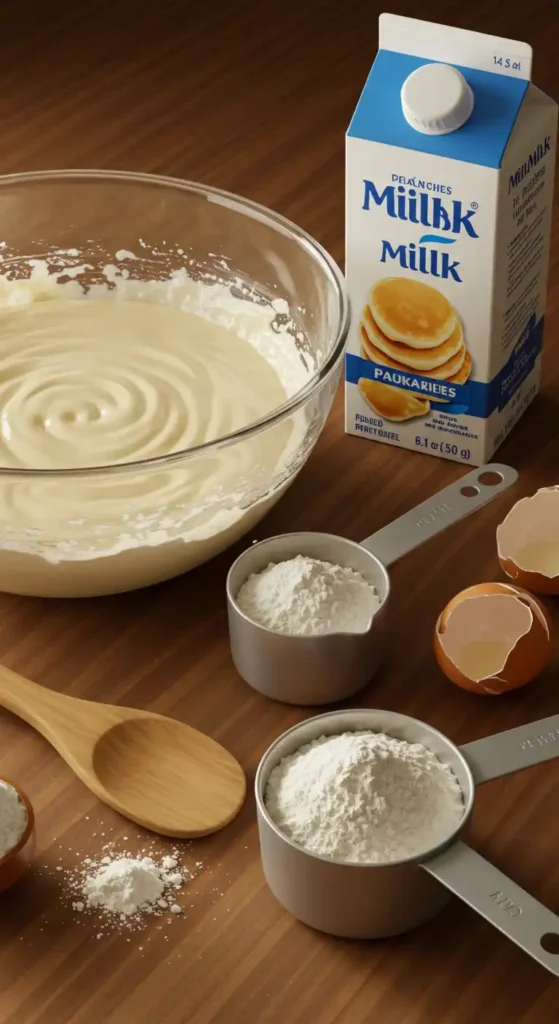
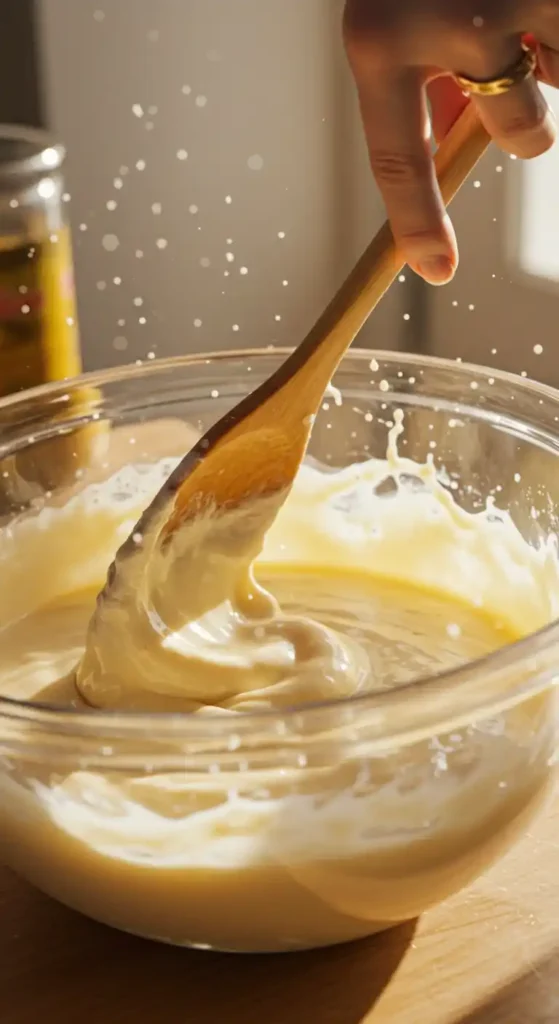
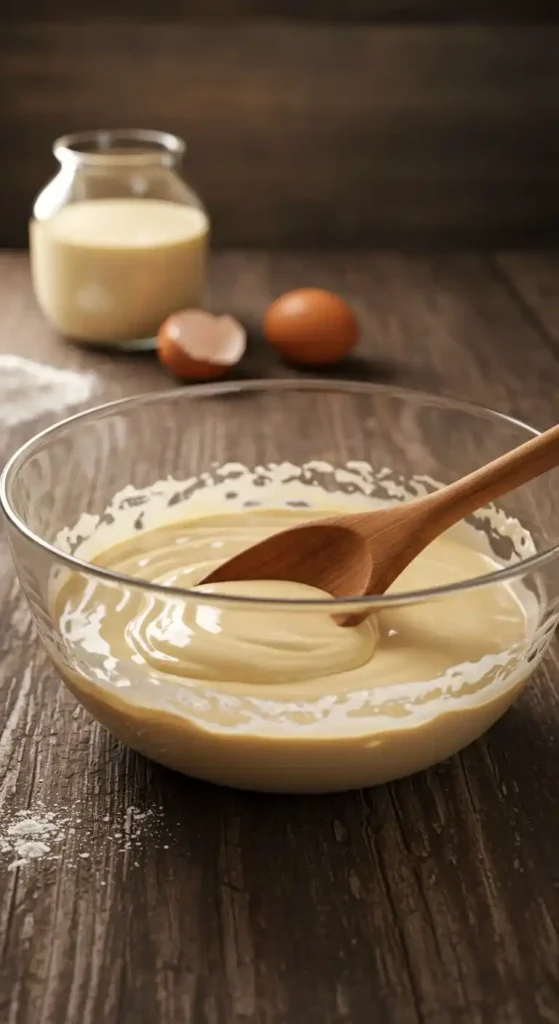
- Combine the Dry Ingredients
- In a medium bowl, whisk together the oat flour, baking powder, salt, cinnamon, and sugar. This ensures that your dry ingredients are evenly mixed and helps create light, fluffy pancakes.
- Prepare the Wet Mixture
- In a separate bowl or measuring cup, mix the milk with the apple cider vinegar. Let it sit for about 2 minutes to create a “buttermilk” effect. Then, add in the egg (or flax egg), melted butter (or oil), and vanilla extract. Whisk until well combined.
- Bring It All Together
- Gradually pour the wet ingredients into the bowl of dry ingredients. Stir gently until just combined. Avoid overmixing; some small lumps are perfectly fine. Overmixing can lead to dense, chewy pancakes instead of fluffy ones.
- Let the Batter Rest
- Set the batter aside for about 5 minutes. Oat flour tends to absorb liquid more slowly than regular flour, so giving the batter a short rest will help your pancakes cook evenly and fluff up.
- Preheat & Grease Your Skillet
- Heat a non-stick skillet or griddle over medium heat. Lightly grease with butter or cooking spray. If you’re using coconut oil, just ensure it’s melted and spread evenly on the surface.
- Cook the Pancakes
- Use about ¼ cup of batter for each pancake. Pour onto the heated skillet and cook for 2–3 minutes, or until small bubbles start appearing on the surface. Flip and cook the other side for another 1–2 minutes. The pancakes should be a beautiful golden-brown color.
- Keep Them Warm
- Transfer cooked pancakes to a plate and cover with a clean kitchen towel to keep them warm while you finish cooking the remaining batter.
Possible Pitfalls & Tips
- Too Thick? If your batter seems overly thick, add a splash more milk. Oat flour can thicken quickly as it absorbs liquid.
- Consistency Check: Aim for a pourable yet thick batter. If it’s too runny, you won’t get fluffy pancakes; if it’s too thick, you’ll end up with doughy centers.
- Cooking Temperature: Medium heat is your friend. Cook pancakes on too high heat, and they might burn on the outside while remaining uncooked on the inside.
Oat Flour Pancakes: Additional Tips & Variations
1. Boost the Flavor
- Stir a handful of fresh blueberries or chocolate chips into the batter for a sweet twist.
- Sprinkle some crushed walnuts or pecans for added crunch and healthy fats.
2. Go Savory
- Omit the sugar and cinnamon, then add a pinch of garlic powder and some chopped scallions. Serve with a dollop of plain Greek yogurt for a tangy twist.
3. Storage & Reheating
- Fridge: Store leftover pancakes in an airtight container in the refrigerator for up to 3 days.
- Freezer: To freeze, place cooked pancakes in a single layer on a parchment-lined baking sheet. Once frozen, transfer to a freezer-safe bag and store for up to 2 months.
- Reheat: Pop them in a toaster or warm them in a skillet for a few minutes. You can also microwave them, but they may lose a bit of their fluffiness.
Expert Tips & Nutrition Highlights
- High in Fiber: Oat flour is known for its high fiber content, which can help keep you feeling full and support healthy digestion.
- Lower in Refined Carbs: Compared to regular flour, oat flour is a less processed option and comes with some additional vitamins and minerals.
- Adapt for Specific Diets: If you need them to be dairy-free, simply use a plant-based milk and skip the butter. For vegans, swap the egg with a flax egg.
- Health Disclaimer: I’m not a nutritionist, but using wholesome ingredients like oats and plant-based milk can be a positive choice for many diets. Always consult a healthcare professional for individualized advice.
Fluffy Oat Flour Pancakes’s FAQ
How can I substitute oat flour for all-purpose flour in pancakes?
You can use oat flour in place of all-purpose flour by substituting one cup of all-purpose flour with about 1⅓ cups of oat flour, then adjusting liquids if needed. This ensures your oat flour pancakes stay moist and fluffy without becoming dense.
Why do my oat pancakes fall apart?
Oat flour lacks gluten, so pancakes can crumble if there’s not enough binding agent. Try adding an extra egg, a flax egg, or a bit more liquid to create cohesive oat flour pancakes.
Are oatmeal pancakes healthier than regular pancakes?
Often, yes—oat flour pancakes are higher in fiber and essential nutrients compared to traditional wheat pancakes. This can help keep you fuller longer and provide more sustained energy.
How much oat flour equals 1 cup all-purpose flour?
In most recipes, 1 cup of all-purpose flour can be replaced with about 1⅓ cups of oat flour. Be prepared to adjust liquid ingredients to prevent your batter from getting too thick.
Why use oat flour when making pancakes?
Oat flour adds a boost of fiber, a naturally sweet flavor, and a moist, fluffy texture. It’s a nutritious, gluten-free option that’s perfect for creating wholesome oat flour pancakes.
Can I freeze these oat flour pancakes ?
Absolutely! Simply let your oat flour pancakes cool completely, then arrange them in a single layer on a baking sheet and place them in the freezer. Once they’re frozen, transfer them to a freezer-safe bag. This method prevents them from sticking together. Reheat in the toaster or on a skillet whenever you want a quick breakfast.
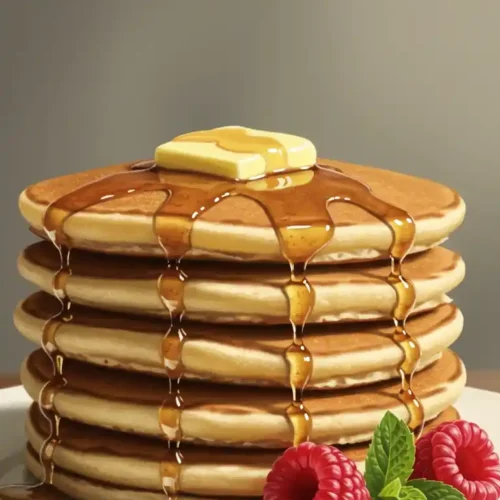
Oat Flour Pancakes
Equipment
- Mixing bowls
- Whisk
- Measuring cups and spoons
- Non-stick skillet or griddle
- Spatula
Ingredients
- 1 ½ cups oat flour certified gluten-free
- 1 tablespoon baking powder
- ½ teaspoon salt
- 1 teaspoon ground cinnamon optional
- 1 tablespoon sugar or sweetener of your choice
- 1 cup milk dairy or non-dairy
- 1 tablespoon apple cider vinegar
- 1 large egg substitute flax egg for vegan
- 1 teaspoon vanilla extract
- 1 tablespoon melted butter or coconut oil
Instructions
Combine the Dry Ingredients
- In a medium bowl, whisk together the oat flour, baking powder, salt, cinnamon, and sugar.
Prepare the Wet Mixture
- In a separate bowl or measuring cup, combine the milk and apple cider vinegar. Let it sit for about 2 minutes to curdle slightly (like buttermilk). Then add the egg (or flax egg), vanilla extract, and melted butter (or oil). Whisk until smooth.
Mix the Batter
- Pour the wet ingredients into the dry ingredients. Stir gently until just combined. Avoid overmixing—some small lumps are fine. Let the batter rest for 5 minutes so the oat flour can absorb the liquid.
Cook the Pancakes
- Heat a non-stick skillet or griddle over medium heat. Lightly coat with butter or cooking spray. Scoop about ¼ cup of batter per pancake onto the skillet. Cook for 2–3 minutes, or until small bubbles appear on the surface. Flip and cook the other side for 1–2 minutes or until golden brown.
Serve & Enjoy
- Transfer the pancakes to a plate and keep them warm. Top with fresh fruit, maple syrup, or your favorite pancake toppings.
Notes
- Gluten-Free Check: Always verify your oat flour is labeled “gluten-free” to avoid cross-contamination.
- Vegan Option: Replace the egg with a flax egg (1 tablespoon ground flaxseed + 3 tablespoons water, set for 5 minutes). Use a plant-based milk and skip dairy butter if desired.
- Storage: Leftover pancakes can be refrigerated for up to 3 days or frozen for up to 2 months. Reheat in a toaster or on a skillet.
- Flavor Variations: Add a handful of blueberries, chocolate chips, or nuts for extra taste and texture.
If you give this recipe a try, I’d love to hear how it goes! Feel free to rate, comment, or share this recipe on social media. And if you’re new around here.
Enjoy your delightful stack of oat flour pancakes and have a wonderful day in the kitchen!

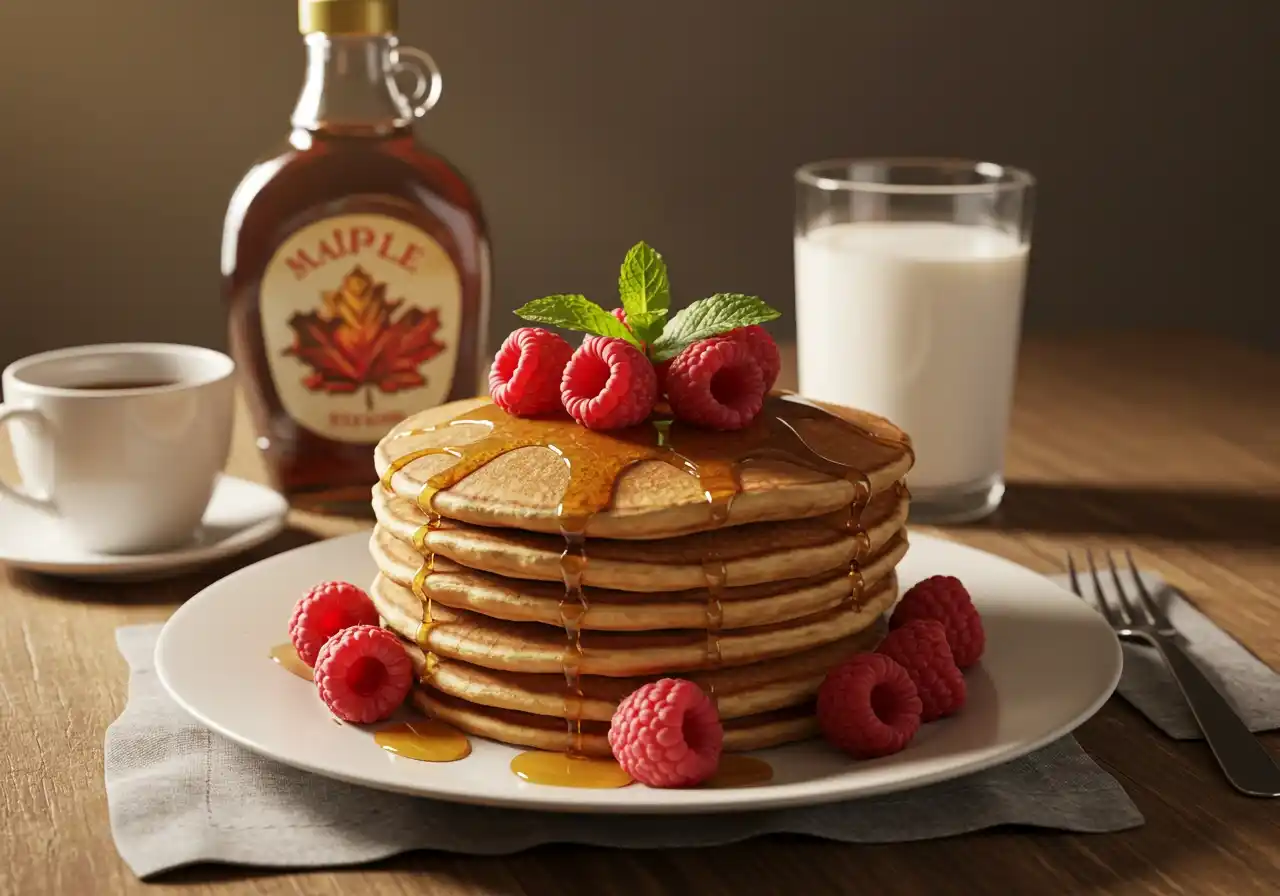
Good job, I’ll try it today